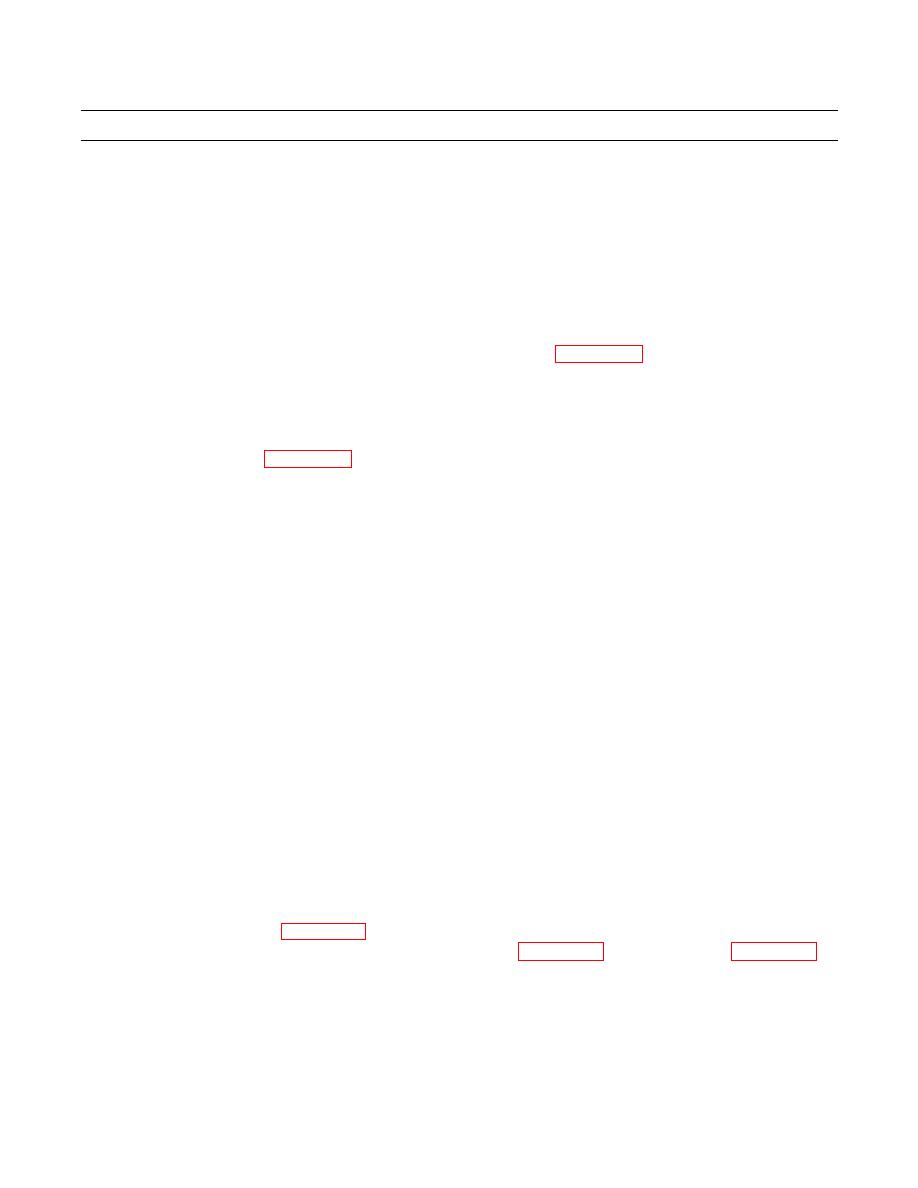 |
|||
|
|
|||
|
|
|||
| ||||||||||
|
|
 TM 5-2410-237-23
GENERAL MAINTENANCE INSTRUCTIONS - CONTINUED
0241 00
STANDARD TOOL REQUIREMENTS - CONTINUED
f.
Inventory tools before and after each use.
2.
Some maintenance tasks may require special or fabricated tools. The "Initial Setup" of the procedure will specify any
special or fabricated tools needed to perform that procedure. Use these special tools only for the maintenance procedures
for which they are designed or called out. If you are unfamiliar with a required tool, see your supervisor.
APPLYING TORQUE
1.
2.
If a unique torque value is required, it will be provided in the procedural step of the task.
TAGGING INSTRUCTIONS
1.
Use marker tags (Item 37, WP 0249 00) to identify all electrical wires, fuel, oil, coolant, and hydraulic lines, and any
other parts which may be hard to identify or replace later. Fasten tags to parts during removal by wrapping wire fasten-
ers around or through parts and twisting ends together. Position tags to be out of the way during cleaning, inspection,
and repair. Mark tags with a pencil, pen or marker.
2.
Whenever possible, identify electrical wires with the number of the terminal or wire to which it connects. If no markings
can be found, tag both wires or wire and terminal, and use the same identifying mark for both. If you cannot tag a wire
because it must fit through a small hole or you cannot reach it, write down the description of the wire and the point to
which it connects or draw a simple diagram on paper. Be sure to write down enough information so you will be able to
properly connect the wires during assembly. If you need to identify a loose wire, look for identifying number near end of
the wire, stamped on a permanent metal tag. Compare the number to wire numbers on the appropriate electrical sche-
matic.
3.
Identify fuel, oil, coolant, and hydraulic lines when you are taking off more than one line at the same time. Mark tags
with points to which lines and hoses must be connected. If it is not obvious which end of a line goes where, tag each end
of the line.
4.
Identify and tag other parts as required by name and installed location.
LINES AND PORTS
To keep dirt from contaminating fluid systems when removing and installing fuel, oil, coolant, and hydraulic lines, per-
form the following steps:
a.
Clean fittings and surrounding area before disconnecting lines.
b.
Cover, cap, plug (Item 2, WP 0249 00) or tape lines and ports after disconnecting lines. When these are not avail-
able, use plastic bags and rubber bands, clean rags (Item 29, WP 0249 00), duct tape (Item 39, WP 0249 00) or
other similar materials to prevent dirt from entering system.
c.
Ensure that new and used parts are clean before installing.
d.
Replace all removed tiedown straps.
e.
Wait to remove cover, cap, plug or tape from lines and ports until just before installing lines.
0241 00-7
|
|
Privacy Statement - Press Release - Copyright Information. - Contact Us |